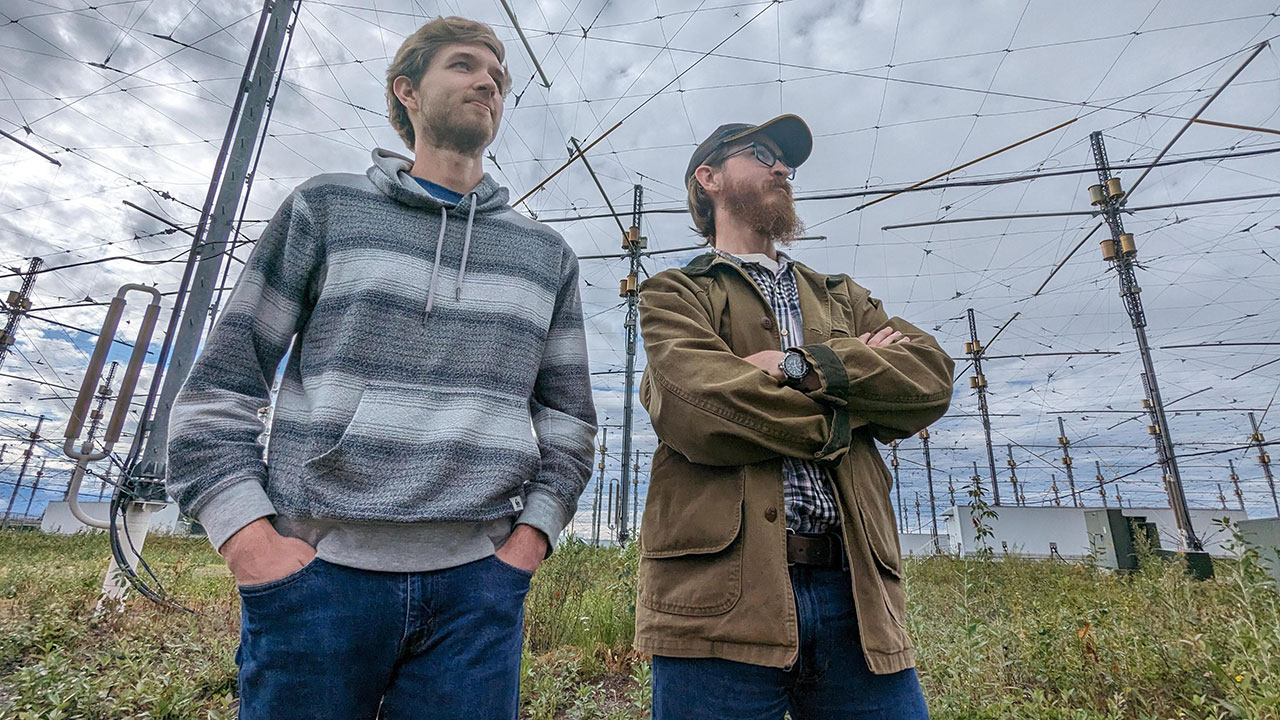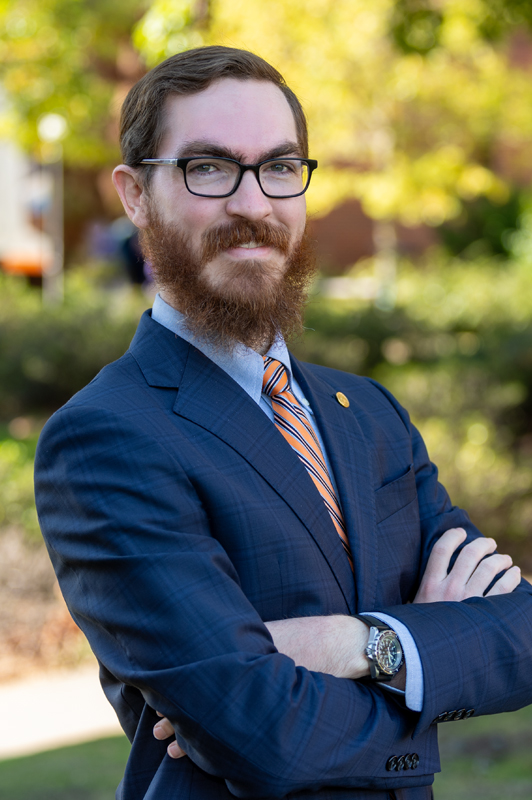Assistant professor in ECE, senior in wireless engineering study upper atmospheric behavior in Alaska
Published: Sep 28, 2023 2:15 PM
By Diane Pham
Hunter Burch, assistant professor in electrical and computer engineering, and Taylor Lindley, a senior in wireless engineering, spent two weeks in August studying properties and behavior of the upper atmosphere.
Hosted by the University of Alaska-Fairbanks, they attended the Polar Aeronomy and Remote Sensing summer school program, August 1-14, in Fairbanks, Alaska. Following the program, Burch and Lindley had the opportunity to participate in a corresponding research campaign at the High Frequency Active Auroral Research Program (HAARP) in Gakona, Alaska.
There, the researchers learned how to use an ionospheric research instrument, a 3.6 megawatt high-frequency radio transmitter and the world’s most powerful and flexible ionospheric heater. The program’s purpose is to study the properties and behavior of the upper atmosphere and ionosphere.
“This is a one-of-a-kind, world class research instrument that the only way to learn how to use it is to go up there,” Burch said.
After completing their training, Burch and Lindley conducted HAARP experiments with a focus on the science of the auroral electro jet current.
“We have these very complicated interactions between the Earth’s systems and the ionosphere, the magnetic field of the Earth, and all this stuff comes in from deep space. We classify this as space weather. It comes down to Earth and it impacts us,” Burch said. “Then you get messed up field lines and instruments doing things that they’re not supposed to do. Compasses point the wrong direction and satellite communications can be disrupted.”
Burch and Lindley are writing a research paper using the data they obtained from the HAARP program.
“I thought it was a fantastic experience, I think my favorite part about it was getting to take an Auburn undergraduate student to basically this world class research facility,” Burch said.
Media Contact: , jem0040@auburn.edu, 334.844.3447
Taylor Lindley, left, and Hunter Burch with transmitting antennas for the ionosphere research instrument, world’s most powerful and flexible ionospheric heater.


